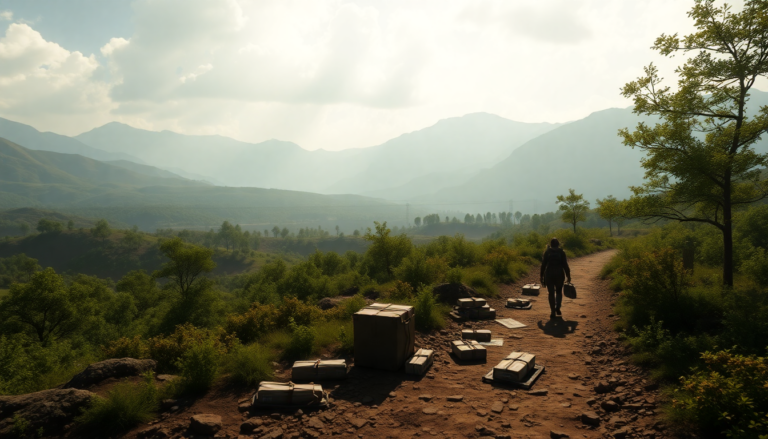Argomenti trattati
Death Stranding 2 isn’t just another title in the open world genre; it’s an invitation to explore and engage with a richly detailed landscape while completing delivery missions. What sets this game apart is how it takes what might seem like mundane tasks and turns them into thought-provoking challenges that require both strategy and decision-making. In this article, we’ll dive into the game’s intricate open world, showcasing how it encourages mastery and fosters player interaction.
Exploring the Open World Landscape
The sprawling open world of Death Stranding 2, featuring diverse terrains from the deserts of Mexico to the rugged landscapes of Australia, is carefully designed to make players pause and consider their choices. As you navigate this post-apocalyptic setting, you’ll face a variety of obstacles that demand strategic thinking. Every decision you make—like whether to travel light or haul extra cargo—has real implications for your gameplay experience.
For example, if you choose to dart through the landscape with a lighter load, you might find yourself caught off guard by sudden weather changes, like unexpected rain swelling rivers or creating impassable terrain. On the flip side, carrying more weight may slow you down but can also equip you with the resources necessary to tackle environmental challenges. This delicate balancing act keeps players on their toes, constantly reevaluating their strategies based on the circumstances at hand.
This design philosophy is at the heart of what makes Death Stranding 2 so unique. The world isn’t merely a backdrop for missions; it’s an integral part of the experience that influences how players interact with it. Every path you take, from steep hills to craggy cliffs, demands careful navigation and consideration of your character’s abilities and resources.
The Power of Player Choice and Consequence
In Death Stranding 2, you step into the shoes of Sam Porter Bridges, a dedicated postman tasked with connecting isolated communities through package deliveries. This seemingly straightforward job becomes increasingly intricate as you face various challenges along the way. The game encourages you to think critically about your delivery strategy. Will you brave the riskier route through treacherous areas, or will you opt for a longer but safer path? These choices resonate with a broader theme of agency throughout the game.
The open world can be harsh at times. For instance, if you rush down a steep slope without maintaining your balance, you might find yourself tumbling down, underscoring the need for caution and skill. Yet, the game offers tools to aid you, such as upgraded vehicles and shared structures built by fellow players. These elements not only enhance your experience but also promote a sense of collaboration in overcoming the world’s challenges.
Even with these aids, you’ll still need to engage meaningfully with the environment. Whether you’re plotting a route through perilous terrain or using a zipline to traverse a chasm, every action reinforces the sense of achievement that comes from mastering the world of Death Stranding 2. It transforms ordinary deliveries into a rewarding journey focused on building connections and honing your skills.
A Journey of Growth and Mastery
As you progress through Death Stranding 2, you’ll embark on a journey of growth that mirrors your increasing familiarity with the game’s world. The tasks—collecting and delivering parcels—start out as simple objectives but evolve into complex challenges that require both finesse and strategic planning. This growth is gradual yet impactful, allowing players to build confidence in their ability to navigate the landscape.
Take, for example, a hiking trail that initially fills you with trepidation; by the end of the game, it becomes second nature. This skill evolution is further complemented by new gadgets and tools that enhance your gameplay experience without overshadowing your developing proficiency. Such design choices ensure you feel a genuine sense of progression and accomplishment, making your time in the game deeply satisfying.
Ultimately, Death Stranding 2 distinguishes itself in the crowded open world genre. Its focus on player choice, environmental engagement, and personal growth crafts a unique gaming experience that is both challenging and rewarding. The game’s ability to turn simple delivery missions into a complex web of interactions highlights its mastery in open world design, solidifying its place as a significant title in modern gaming.

